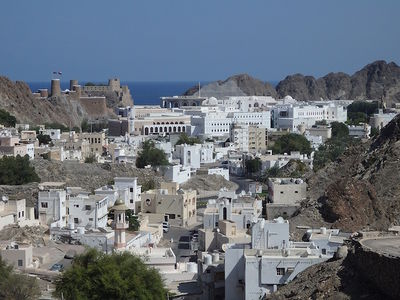MUSCAT
MUSCAT
The problem with a lot of ports featured on a typical Arabian Gulf cruise is that they are rather similar. Dubai, Abu Dhabi, and Bahrain, for example, are all about skyscrapers and shiny shopping malls, temples glittering to excess. But Muscat, the capital of Oman, stands for completely different values: tradition, history, restriction. Although the country is far from cheap, it is deeply conservative and has always placed emphasis on careful, controlled development. Thus Muttrah, the old part of Muscat's waterfront and the first sight to greet cruise passengers, has been carefully preserved, presenting a blend of traditional architecture and rugged natural beauty that many visitors find enchanting.
Muscat could not be in a more beautiful setting. The old part of the city, shrouded in terracotta mountains, stretches along a pretty waterfront. Its setting is flanked by a 16th-century hill fortress on either side, the remnants of the time occupied by Oman, taking their trade routes eastwards. As well as cruise ships, container ships, and private yachts wandering about, wormholes of old-fashioned wooden ships (sailing ships) circle the busy harbor. If your ship passes, the view of the mountains turns pink, while the pre-morning call to prayer echoing through the old rooftops is unforgettable.
Modern Muscat stretches out behind the mountains, away from the sea, but for independent exploration, the old part of the city is within easy and safe walking distance; it is there that you will find the winding alleys of the souk or market. Beyond the town, there are mountain hikes and wadis (stagnant waterways) for 4x4 walks along the coast to visit fishing villages or inland to explore some medieval fortifications.
